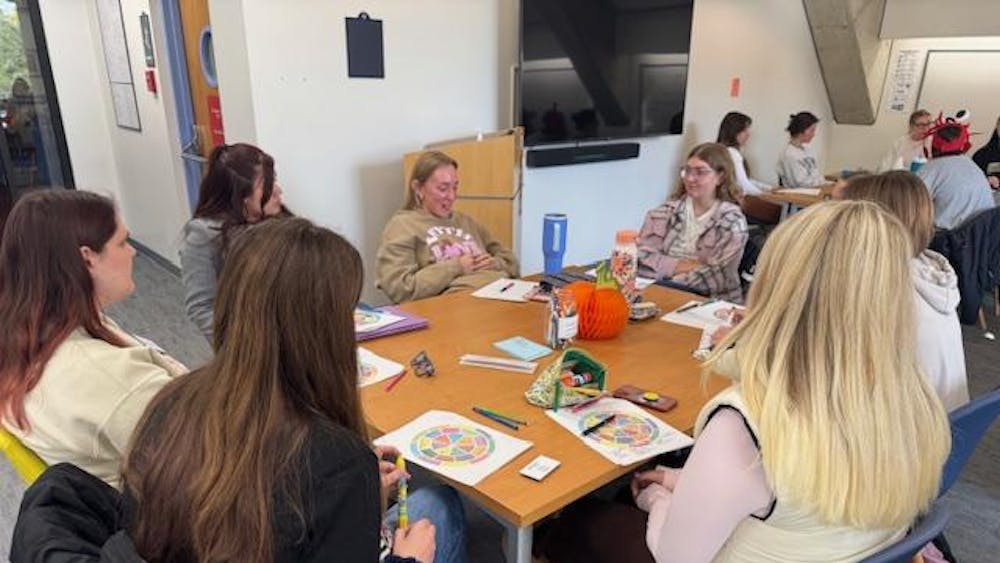This weekend at the Morris Inn, the Boler-Parseghian Center for Rare & Neglected Diseases hosted the 11th annual conference on advancing rare disease research, therapy and patient advocacy. The event aligned with the global World Rare Disease Day and was chosen to fall on Feb. 29 in order raise awareness for people living with rare diseases on the “rarest day of the year,” according to the website.
The center’s director, Kasturi Haldar, explained why the organization holds the conference in tandem with World Rare Disease Day each year.
“We need to raise awareness for these diseases because individual diseases affect a small number of patients,” Haldar said. “The more awareness that you can raise, the faster you will be able to draw attention.”
While 30 million Americans suffer from rare diseases, Haldar said drawing attention to these diseases is very important with respect to human health.
The conference began as a small meeting in 2009 as a lunch between colleagues at the Morris Inn to celebrate World Rare Disease Day, where each participant brought a friend who knew nothing about rare diseases. The conference has since then grown from a lunch to a two-day conference with attendees from all over the country.
Outreach coordinator Barbara Calhoun said the theme for this year’s conference was rare disease patient advocacy.
“We wanted to focus on how the University has many entities that collaborate together to assist rare disease patients,” Calhoun said. “Our goal is to be rare disease patient advocates through the clinical research we do, the laboratory research we do, drug discovery and through our students working with patients.”
Calhoun said the conference’s purpose is to provide a setting for patients, their families, service organizations and professionals in the health field to gather in discussions.
“The purpose of this conference is to provide patients with a forum for which they can share their experiences with the disease, whether it be from the perspective of their personal day-to-day life, their work with a patient service organization that they’ve developed and how that has helped their disease, and also we are looking at how our community, specifically South Bend, cares for those patients,” Calhoun said.
The center offers a class open to juniors and seniors who play a role in the conference, Calhoun said.
“We partner patient families with students in our rare disease class,” Calhoun said. “The students in the rare disease class learn all they can about one particular disease, and then they get to meet the patient family that has the disease.”
Calhoun said the students also have the opportunity to work with clinicians who treat patients with the disease the students are studying, as well as researchers at Notre Dame who are working to develop treatments and therapies for the rare diseases.
Haldar emphasized the importance of the family unit in treating and understanding a rare disease.
“The families know a lot about their disease because they might see a doctor once a year or twice a year, but they live with their disease, and since the disease is quite unique, often clinicians don’t really know a lot about that disease,” Haldar said.
Haldar said the families serve as a “repository” for information, and they want to share that information to raise awareness.
While the first day of the conference consisted of keynote speakers, awards and a dinner, the second day of the conference included a number of panels discussions regarding what it's like to live with a rare disease, clinical care models and patient advocacy at Notre Dame — among others — in addition to research sessions. The students in the rare disease class also presented posters on the diseases they studied.
Calhoun said two awards were given at the conference to current Notre Dame undergraduate students.
Senior Danielle Terek received the John M. and Mary Jo Boler Rare Disease Research Award.
Calhoun said this award is given to an undergraduate student who has made a significant contribution in an area of research for a rare disease.
Terek developed the first NORD summary for a disease called spinal muscular atrophy with respiratory distress (SMARD), Calhoun said.
Saint May's senior Elena Kolarevic, who has a rare disease called Diamond-Blackfan anemia, received the Megan K. Crowley Award for Patient Advocacy.
“She has worked with multiple patient service organizations and clinics to help other patients with rare diseases,” Calhoun said. “She is an integral part of what we look for in patients that are advocating for others.”
Read More
Trending









